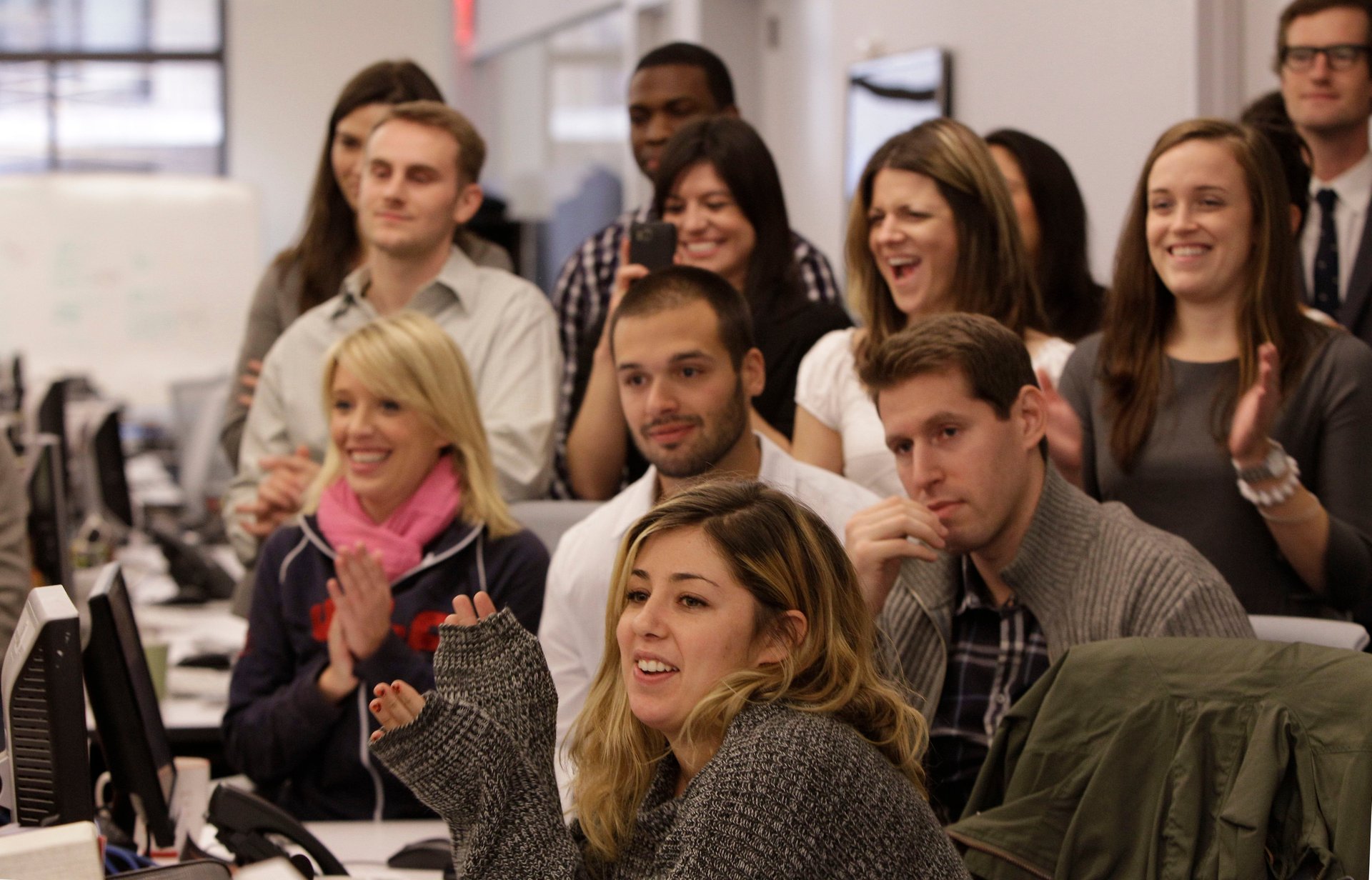Etsy figured out how to find more women engineers
Etsy has a pretty female vibe. About 80 percent of its customers are women. So is about 50 percent of its staff. But until very recently, there was one part of the company that looked quite different: the engineering team, which had three women on a team of 47 in early 2011.


Etsy has a pretty female vibe. About 80 percent of its customers are women. So is about 50 percent of its staff. But until very recently, there was one part of the company that looked quite different: the engineering team, which had three women on a team of 47 in early 2011.
This created what Etsy CTO Kellan Elliott-McCrea calls a “really unfortunate boys vs. girls dynamic.” The boys sat over here, the girls over there, and the two sides were split right down the middle by gender. Etsy’s senior staff decided to try to hire more women engineers, a process Elliott-McCrea described in a recent talk at a the First Round Capital CTO Summit.
Easier said than done. By the end of the year, the engineering team had ballooned to 85 people, just four of whom were women — a 35 percent decline in gender diversity “over a year when,” as Elliott-McCrea put it, “we were saying: It’s *really* important. We’re really working hard on this.”
Saying diversity was a value wasn’t enough. Etsy decided to put some real muscle behind its priority, developing a package of grants that would be targeted at women participants in its Hacker School, a program for young engineers. Though the program was free, living in New York is not, and a couple-thousand-dollar grant could really entice someone to take the opportunity. Perhaps even more importantly, by aggressively promoting the grants to young women, Etsy signaled: Please come. We want you! In the first year of the grant program, female applications to the Hacker School shot way up, and the result was an entering class that was half women.
In the spring program before grants were available, only three female applicants were accepted, and just one — one! — attended. Once the grants were in place, 24 women were accepted, 23 of whom attended. Of this pool, Etsy hired five women and three men (as of October at least, when the talk was given, though it was only recently posted) from its Hacker School Summer 2012 class. Additionally, Elliott-McCrea says the visibility of their effort attracted the attention of women engineers in more senior positions at other companies, which led to interest in working at Etsy. “The grants felt like a real invitation; people actually believed we wanted them to be there,” he said. Their 110-person team had 20 women as of Elliott-McCrea’s talk — still a small number, but 400 percent growth since 2011.
Elliott-McCrea says the reason to hire women was not because women are somehow “chromosomally more connected with the product” just because of Etsy’s female customer base. Rather, placing an emphasis on hiring women means access to better and better candidates over time — about 41 percent of Harvard’s 2013 computer science graduates will be women, and it’s going to be hard to attract them (and those who come after them) to an all-male team.
Interestingly, Elliott-McCrea also found that by trying to hire women, they fielded better male candidates too. “We found that the engineers who are excited about the fact that we are trying to recruit women and that we have that as a value — men or women — are the people we actually want to be hiring. The men who come into our organization who are excited about the fact that we have diversity as a goal are generally the people who are better at listening, they’re better at group learning, they’re better at collaboration, they’re better at communication. They’re particularly the people you want to be your engineering managers and your technical leads. These people are hard to find, and when you can find them they’re awesome.”
Etsy’s Hacker School during the summer of 2012 (FirstRoundCapital/YouTube)
Hacker School grants are not necessarily the best option — or even an option — for smaller companies or organizations, but the example shows the kind of effort and resources required to enact diversity as a value. Perhaps the best part? Once all the summer-school engineers arrived, they didn’t even notice how unusual the gender breakdown was. “It was men and women, coding together, living like engineers. It was wild. The fact that it was revolutionary is in itself sad. But many of them thought it was normal,” Elliott-McCrea remarked in the talk. And that’s what a program like this is about: Making a new normal.
You can watch Elliott-McCrea’s whole talk here: